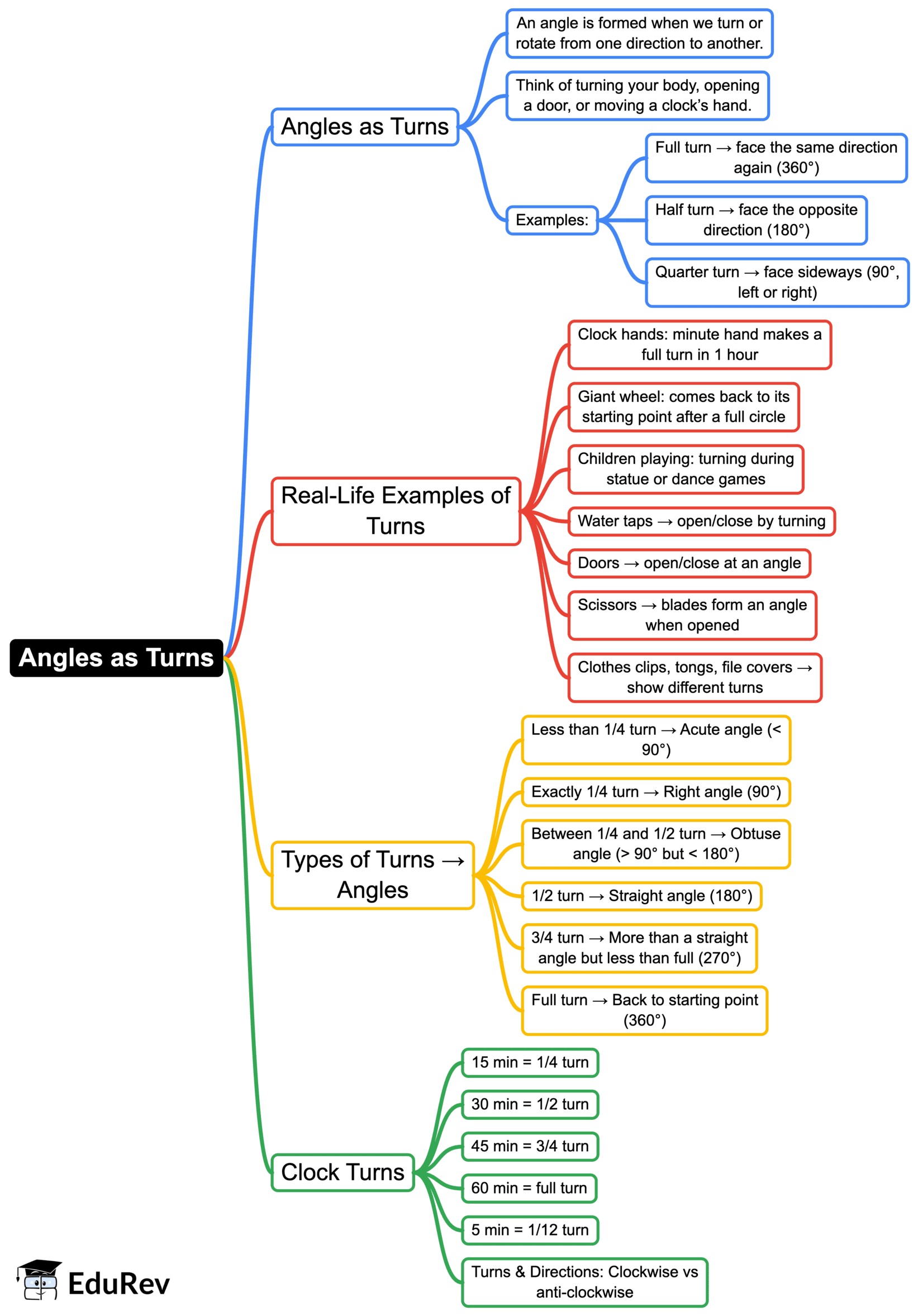Class 5 Exam > Class 5 Notes > Mathematics (Maths Mela) Class 5 - New NCERT > Mind Map: Angles as Turns
Mind Map: Angles as Turns | Mathematics (Maths Mela) Class 5 - New NCERT PDF Download

The document Mind Map: Angles as Turns | Mathematics (Maths Mela) Class 5 - New NCERT is a part of the Class 5 Course Mathematics (Maths Mela) Class 5 - New NCERT.
All you need of Class 5 at this link: Class 5
|
35 videos|276 docs|7 tests
|
FAQs on Mind Map: Angles as Turns - Mathematics (Maths Mela) Class 5 - New NCERT
| 1. What are angles and how are they formed? |  |
Ans. Angles are formed when two rays or line segments meet at a common endpoint called the vertex. The amount of turn between the two rays is measured in degrees (°). Angles can be classified based on their measurements, such as acute (less than 90°), right (exactly 90°), obtuse (more than 90° but less than 180°), and straight (exactly 180°).
| 2. What is the significance of angles in everyday life? |  |
Ans. Angles play a crucial role in various aspects of everyday life, including architecture, engineering, and sports. For instance, architects use angles to design buildings, while athletes use them to improve performance in sports like gymnastics and diving. Understanding angles also helps in navigation and map reading.
| 3. How can we measure angles accurately? |  |
Ans. Angles can be measured using tools such as protractors, which are semi-circular or circular devices marked with degrees. To measure an angle, align the protractor's baseline with one ray of the angle and read the measurement where the other ray crosses the degree scale. Digital tools and apps are also available for precise angle measurement.
| 4. What are complementary and supplementary angles? |  |
Ans. Complementary angles are two angles whose measures add up to 90°. For example, if one angle measures 30°, the other must measure 60° to be complementary. Supplementary angles, on the other hand, are two angles that sum up to 180°. An example would be a 110° angle and a 70° angle, which together make 180°.
| 5. How do angles relate to turns in geometry? |  |
Ans. In geometry, angles represent the amount of turn from one ray to another. A full turn is equivalent to 360°, a half turn to 180°, and a quarter turn to 90°. Understanding angles as turns helps in visualizing and solving problems related to rotation, such as in circular motion or when working with shapes and figures.
Related Searches
















